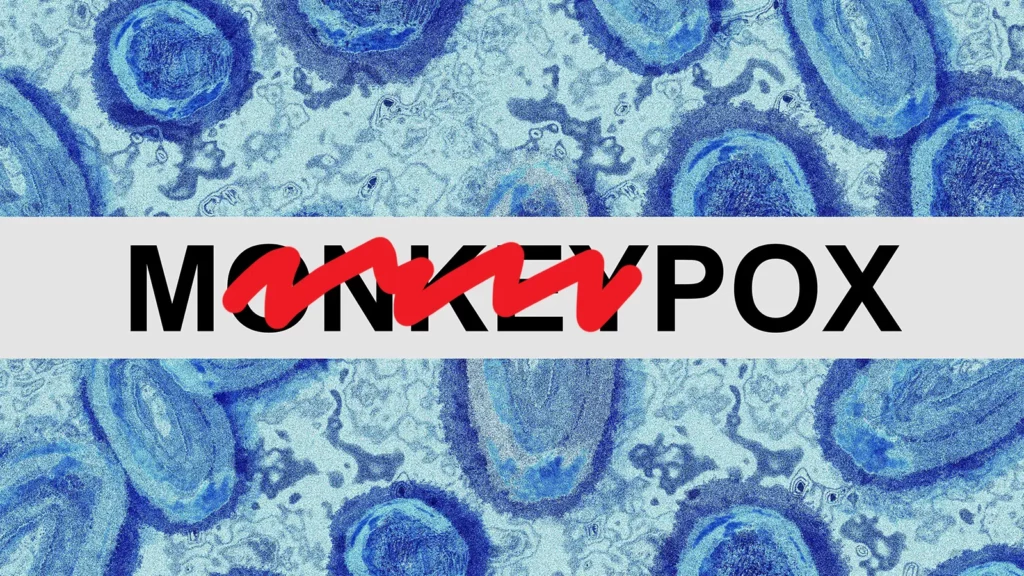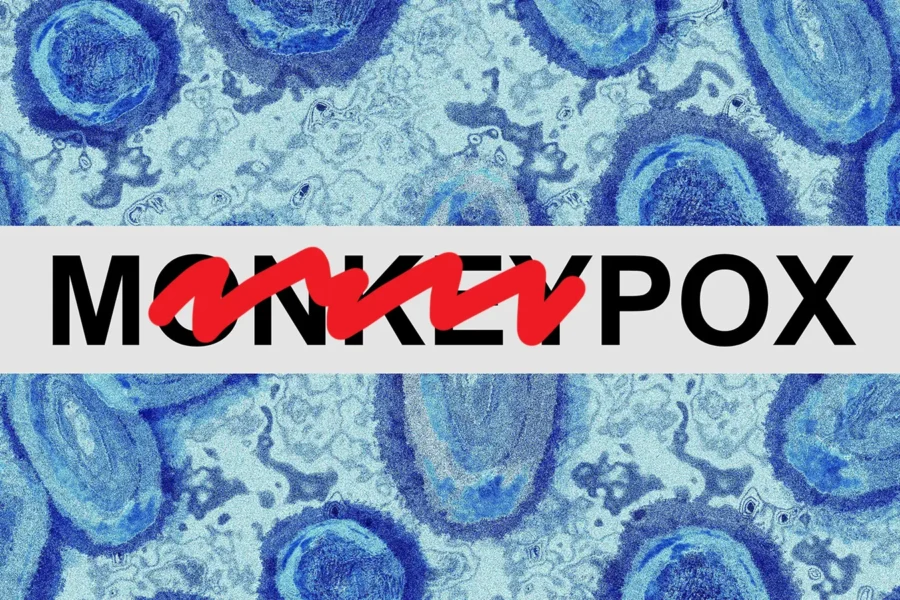
Monkeypox
A recent NPR Goats & Soda article reports that the WHO gives us one year to stop using the term Monkeypox, as the disease’s original name plays into “racist and stigmatizing language.” The international monkeypox outbreak drastically raised the disease’s profile in Europe and the U.S., affecting more than 100 countries in all. As the disease spread, public health experts say, so did the use of discriminatory language and images online.
How did the disease become known as monkeypox anyway?
The monkeypox virus is found in several wild animals, such as rope squirrels, tree squirrels, Gambian pouched rats, dormice and non-human primates, among other species. It was first identified after two outbreaks in 1958 of a pox-like disease among lab monkeys in Denmark—hence the name—although monkeys don’t appear to be the primary carriers of the virus.
The virus was discovered before the human disease in laboratory monkeys in Denmark who had a typical rash. Monkeys in the lab in Denmark were imported from Singapore, not Africa, and there is no evidence to suggest that monkeypox is maintained in nature anywhere outside of Africa. The first human monkeypox case was reported in 1970—a nine-year-old boy in Basankusu, Équateur Province, of the Democratic Republic of the Congo (DRC.)
COVID
The CO stands for corona, VI for virus, and D for disease. Also known as: COVID 19, coronavirus, SARS-CoV-2, Rona, The Vid, Miss Rona, The Rona, and Boomer Remover. We also have the variants, and subvariant names we know so well; Delta, Omicron, Centaurus… Just kidding, “Centaurus” came from Twitter user Xabier Ostale in July 2022, and it went viral. In the beginning there were A and B – the two earliest forms of SARS-CoV-2 that were detected in China in late 2019. As these viruses spread and acquired new mutations, their names accumulated additional numbers: A.1 and B.1, then A.2 and B.2, and so on. by late 2020, such alphanumeric mouthfuls as B.1.1.7 or B.1.351 had entered common scientific language.
The rule-based system for naming SARS-CoV-2 genetic lineages is underpinned by logic: Viruses are a bit like human families, with grandparents, parents, aunts, uncles, and – as time passes – an array of cousins, second cousins, and so on.
So that is how a disease is named in this century, how about the old diseases?
Influenza
There are two schools of thought on how influenza was named. The more popular is that influenza was derived from the Latin root, “influentia” which means “to flow into,” the name influenza is said to stem from medieval times when people thought that humans could fall under the influence of liquid flowing off of stars.
The more obscure version is from the year 1554, when the Venetian Ambassador in London called the sweating sickness of 1551 an influsso, which is the Italian form of infliixio. The latter is the a correct classical term for a humour, catarrh, or defluxion. The Latin word defluxio itself having limited meaning. According to a paper published in The Lancet in April 1896, It was not astrology, but humoral pathology, that brought in the word inflllsso and influxio, out of “influenza” rather than humans falling under the influence of liquid flowing off of stars.
Discovered a disease? WHO has new rules for avoiding offensive names. You should probably read this article from 2015 in Science Magazine.
